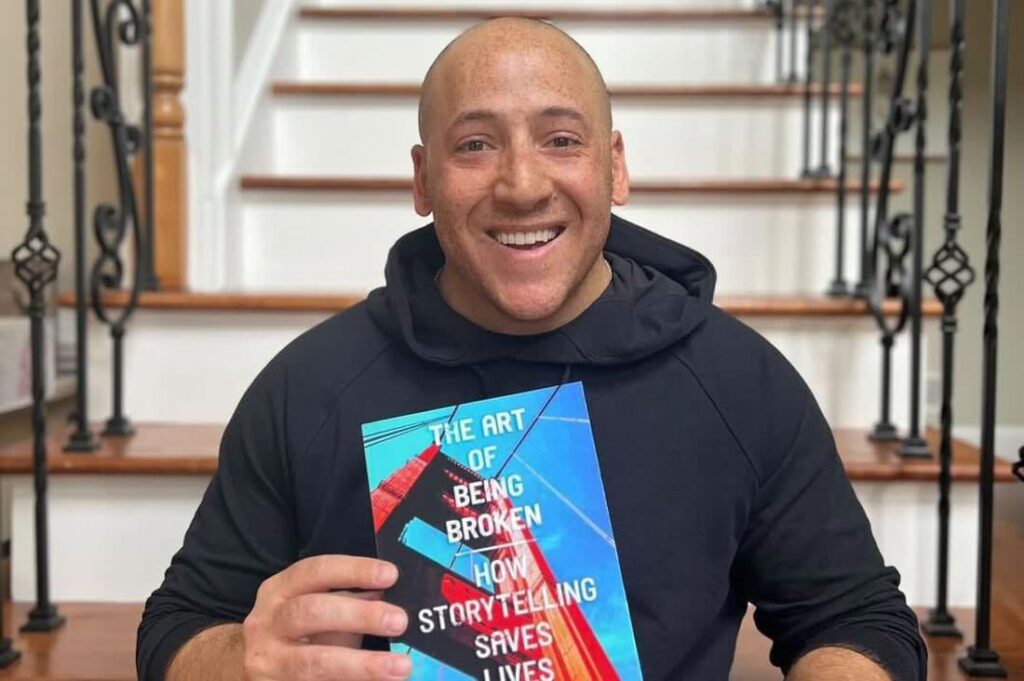Time is a curious thing. An hour can feel like a day while a week can fly by in seconds. In the case of Kevin Hines, who at just 19 years old attempted suicide off the Golden Gate Bridge in 2000, his entire world changed in the four seconds it took for him to hit the frigid waters below. After taking the bus to the bridge, he paced around for 40 minutes before finally jumping. Hines would later be diagnosed with bipolar disorder. At the time of his attempt, he was hearing voices in his head telling him to jump.
There’s a reason why only 36 people have survived a fall off the Golden Gate Bridge. The bridge is about 245 feet above the water—equivalent to a 25-story building—and the four-second drop has you hitting the water at around 80 miles per hour. Regretting his decision in the millisecond his hands left the rail, Hines managed to position himself so that his feet hit the water first. Then, as if in some fractured fairy tale, a sea lion kept him afloat until the Coast Guard arrived.
The Kevin Hines story
A lot has changed since that fateful day, but Hines’ commitment as an advocate for mental health has never faltered. In his work as a global public speaker, author and award-winning documentary filmmaker, Hines uses the power of storytelling to empower people to seek the help that will save their lives. His documentary film, Suicide: The Ripple Effect, which he co-wrote and starred in, won the award for Best Story at the Nice International Film Festival in 2018, and his story has reached hundreds of millions of people around the world.
Hines experienced the power of storytelling first-hand, shortly after his attempt off the Golden Gate Bridge. When Hines gave his first talk—speaking to a group of 120 seventh and eighth graders—he had no intention of sharing his story with anyone. “I was so embarrassed for what I did, and how much I hurt my family and friends with what I did, that I was ready to keep silent for the rest of my life,” Hines recalls.
Yet, immediately following that talk, Hines recalls how several students raised their hands and asked intuitive and empowering questions about mental health. The students were later encouraged to send letters to Hines, and in six of those letters, students wrote about their active suicidal crises. As they were minors, parents and teachers screened those letters and could take action. “Those kids were given the help they needed, and they’re alive today,” Hines notes.
Kevin Hines’ new book: The Art of Being Broken
Most recently, Hines released the second in a three-part memoir series entitled, The Art of Being Broken: How Storytelling Saves Lives. In his first of the series, Cracked, Not Broken: Surviving and Thriving After a Suicide Attempt, Hines delves into the factors that contributed to his attempted suicide and the fallout that followed. As Hines describes, his first memoir tells the story of his life journey and how, despite being placed in foster care and later adopted, he was diagnosed with the same brain disease (bipolar depression) that both his biological parents had.
Available now, The Art of Being Broken: How Storytelling Saves Lives centers on how people can manage their hurt to become unbroken. In addition to Hines sharing more of his personal journey toward recovery, he gives voice to six other contributing authors who also share their stories of triumph over incredible adversity. “These contributing authors are genuine out there doing the work to change the lives of other people every single day,” Hines explains.
Giving other storytellers a platform creates a ripple effect in which Hines’ message can reach as many people as possible. As Hines shares, stories are 22 times more memorable than statistics or facts, and when somebody tells their story—whether on a podcast, in an article or some other medium—their brains sync up with the storytelling, and the neurons and synapses in the brain fire in the same way. “You’re feeling a sense of empathy that is visceral and palpable, and that’s why I wrote this book with these contributing authors—because their stories are just as important as mine,” he says.
When the emotional pain is overbearing
In his teachings, Hines stresses that suicide does not end the pain; it just takes away the entire possibility for things to change or get better. For those who are experiencing suicidal ideations, Hines advises to first look into a mirror and say, “My thoughts do not have to become my actions,” and second, to turn to someone near you—whether you know them or not—and say four simple words: “I need help, now.”
“You may be in the greatest lethal emotional pain you’ve ever experienced right now, but just because you’re in a world of pain today does not mean you don’t get to have that beautiful tomorrow,” he shares. His biggest motto is “Be here, tomorrow.”
Visit www.suicide.org for suicide awareness, prevention and support.
Photo courtesy of Kevin Hines.











